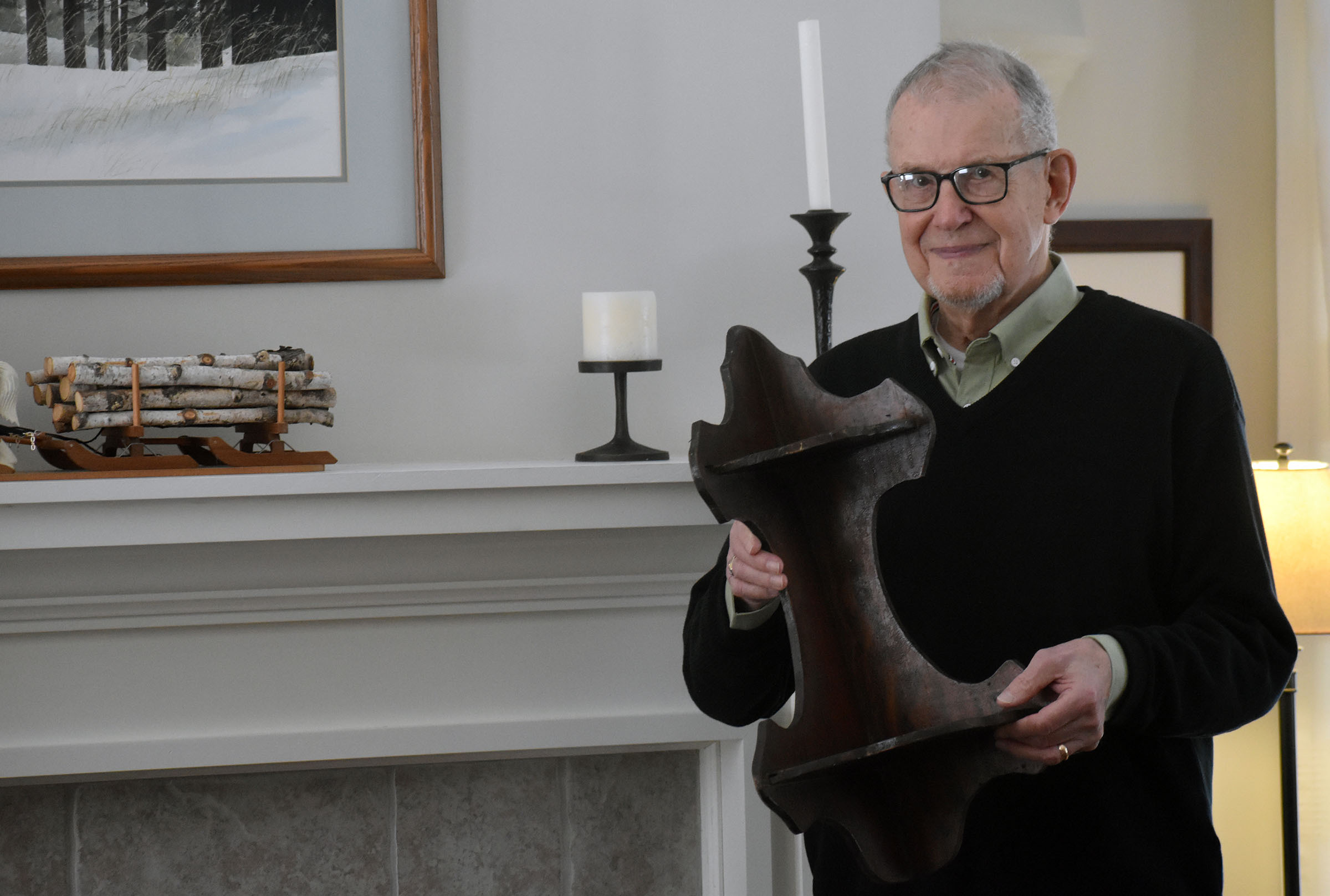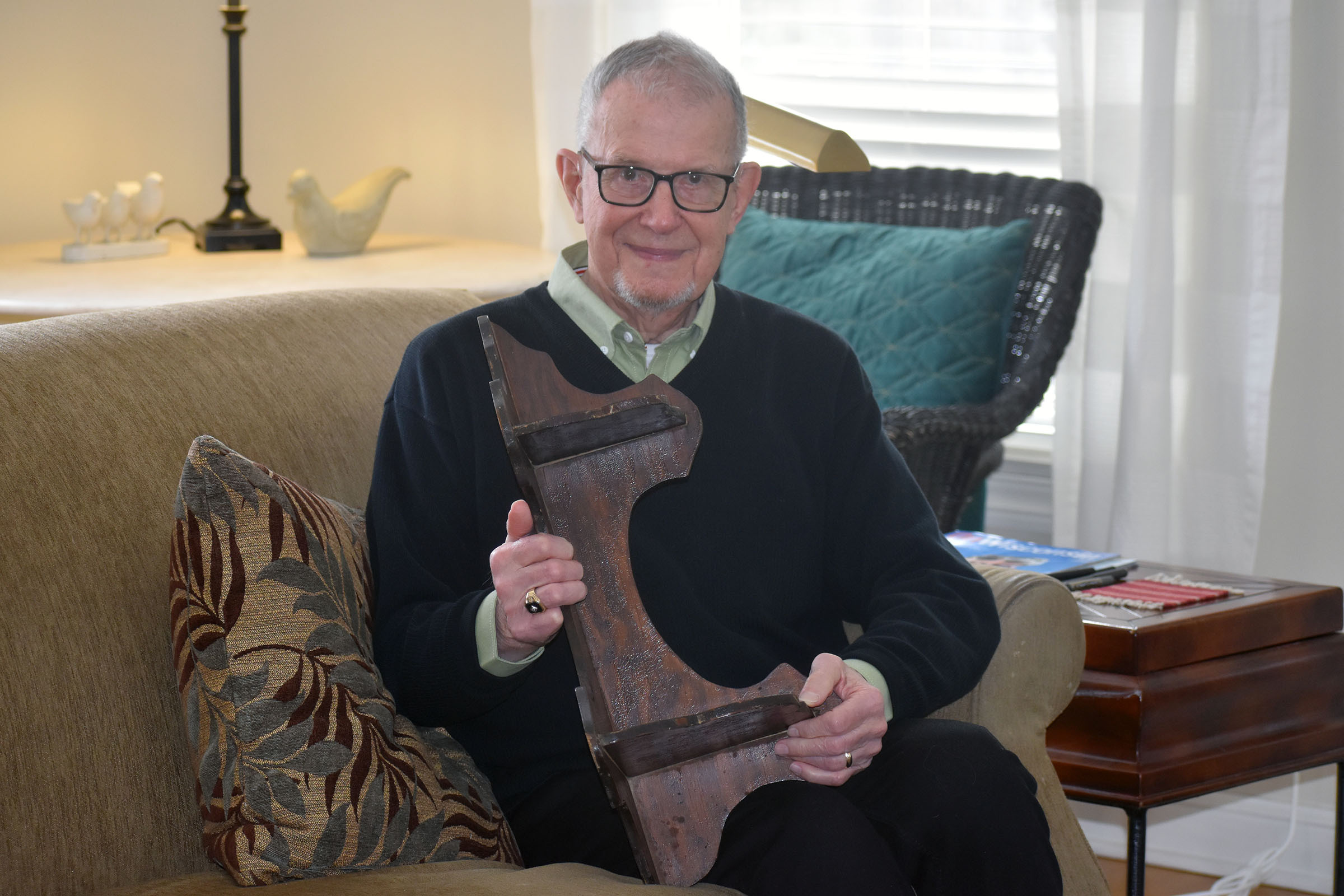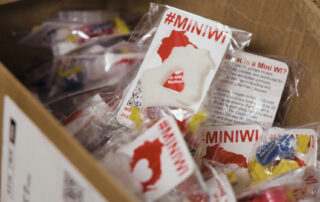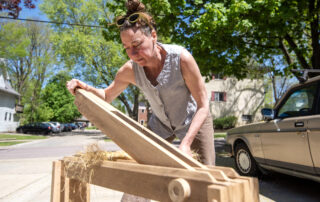It can be really sweet to look back on art projects you created in kindergarten. Maybe it’s a finger painting or a stick figure portrait of your family. For John Klungness of Bayfield, he treasures a wooden corner shelf he made — a work of art he’s had for about 90 years.
==
One of my earliest and most important memories is of building a wooden sidewalk with my dad in the summer of 1937, just before I turned five years old. We had recently moved from a rented house with no basement near Hammond Park in Superior, a house my mom disliked because she said she could see the ground through the floorboards. Mrs. Rahm, originally from Ålesund, Norway, had helped her find our new home — an upstairs flat in a four-family apartment at 1111 ½ 17th Street, where we would live for the next decade.
The apartment building was owned by a widow, Mrs. Lindberg, who had recently moved out of the other upstairs flat into a house near 13th and Cummings. My parents discussed repairing the wooden sidewalk that ran from the front of the apartment to the back on our side, but that would require money and asking the landlady to share the cost. I remember them wondering if Lindberg could be a Norwegian name (they decided it was Swedish) and if she might be related to Charles Lindberg (probably not).
With mom’s encouragement, dad took me with him to discuss the sidewalk with Mrs. Lindberg. It was a businesslike meeting in her living room. Dad, unemployed at the time, offered to do the labor for free if she would cover the cost of materials. He proposed using used wood to keep expenses down, estimating the total would be around $5 — far less than our $16 monthly rent. Mrs. Lindberg asked if used nails could also lower the cost, but dad explained new nails wouldn’t cost much and finding used ones seemed impractical. He acknowledged the sidewalk wouldn’t last forever but assured her it would look good for three to five years.
I remember walking to Wilcutt’s lumberyard with dad and him jokingly saying “we will cut wood.” Shortly after, the lumber and nails were delivered, and we got to work. Dad must have ordered a little extra wood, as he immediately made a sawhorse for cutting the sidewalk slats.
We tore out the old sidewalk, then laid new stringers directly on the leveled ground. I became dad’s full partner in measuring, cutting and nailing the slats. He showed me how to use a model slat to mark the cutting length, and how many nails to use per slat to avoid splitting the wood. The new sidewalk went up quickly and looked grand compared to the broken, gap-toothed one we replaced. I felt such confidence knowing I could build a wooden sidewalk!
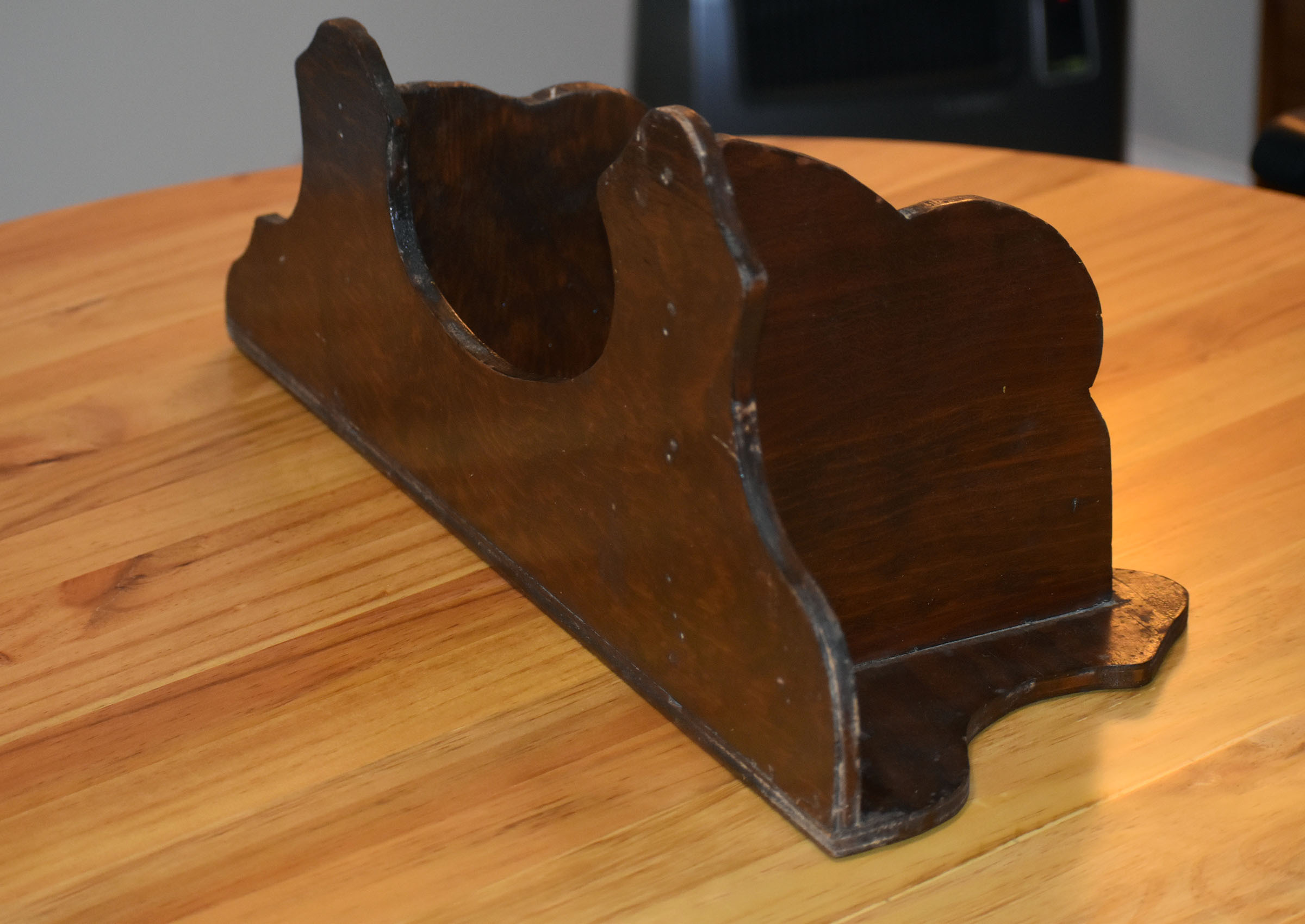
John Klungness made this corner shelf as a kindergarten student at the McCaskill Training School in Superior, Wis. in 1937-1938. Danielle Kaeding/WPR
That fall I started kindergarten at the McCaskill Training School attached to the Superior Normal School for training teachers. The student teacher presented us with an assortment of wooden fruit boxes, fabric scraps and miscellaneous items, telling us we could make whatever we wanted as Christmas gifts for our families — a bathroom cabinet from a peach crate, a painted cigar box jewelry case, anything at all. But none of that interested me; I was a carpenter with bigger ambitions.
When the teacher asked what I wanted to make, I declared I would build a corner shelf like the one my mom had recently admired at a relative’s house. I insisted it had to be made from four pieces of plywood — two for the sides and two for the shelves. The relative had explained to dad how he made his shelf, so naturally I needed the same materials and a plan to follow.
The obliging student teacher borrowed shelf plans and procured plywood and a coping saw from the school’s woodworking shop. Our kindergarten had its own workbench with a vise to hold the wood steady for sawing.
Tracing the patterns and cutting the boards myself was challenging. I went through numerous saw blades, breaking them by cutting them too fast or twisting them in the wood. Each broken blade meant a frustrating delay waiting for a replacement. I learned to saw slowly and steadily to avoid snapping blades.
Soon Christmas passed, then dad’s February birthday, with the shelf still nowhere near complete. I remember classmate Jim Weisner, the tallest and fastest boy, confidently declaring I would never finish. Undaunted, I replied that maybe I wouldn’t, but I also wouldn’t give up.
Finally, by Mother’s Day in May, the shelf was done. Once I finished cutting the pieces, the teacher had them assembled in the woodshop, then provided stain and varnish for me to finish it. She noted in my report card that it was hard work but worth the effort. To me and my parents, it was beautiful. From then on, mom always proudly displayed that shelf in the living or dining room of every home she lived in.
The corner shelf taught me a lifelong lesson about the importance of persistence. That resolve has stayed with me ever since, sometimes strongly, sometimes less so, but always present.
